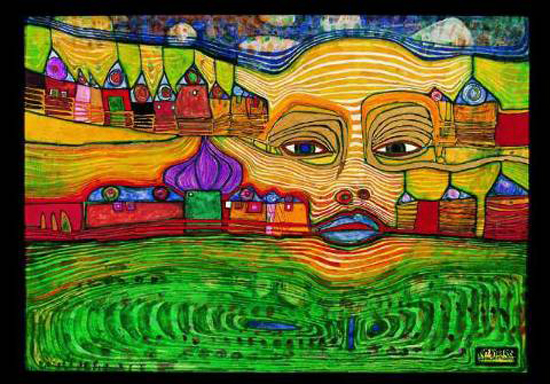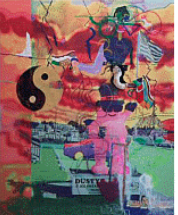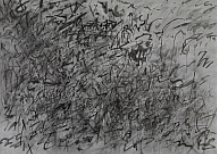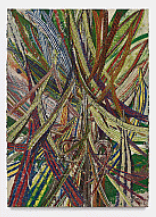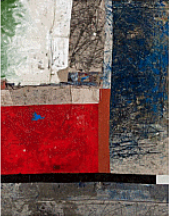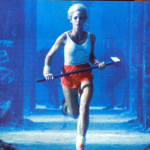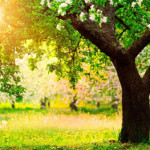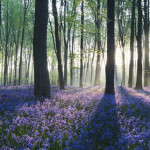We don’t go to church.
But, we pray.
Having heard many great sermons at Unitarian and Presbyterian churches as well as conservative and progressive Synagogues, they have always had a few things in common for me.
They inspire. They connect. They bring me back to my most vital and grateful self. The minister or rabbi is a kind of curator of the world; bringing into his or her spiritual exhibit elements from diverse places like poetry, science and art with the bold intention of addressing one powerful transformational theme.
They invoke in us a sense of mystery, magic and grace.
This is what the MOMA New York children’s lecture on “Lines” provided for our family this past Sunday morning.
“Lines” was merely the portal through which we entered. The straight, curvy and zig-zag way into ideas and feeling and thoughts.
Ever seen a polychronological crazy quilt?
Our talk on “lines” took place in “The Forever Now: Contemporary Painting in an Atemporal World” exhibit, which featured seventeen artists creating, as the curator noted on the upfront wall, “polychronological crazy quilts of assembled cultural data that have the potential to scramble set notions of historical hierarchies and frustrated rigid regimes of taste.”
Quite a mouthful. I know. But deeply thought-provoking. The artists and their paintings scrambled more than our notions of hierarchy and taste.
Michael Williams, in his painting, Does it Hurt to be Crazy? challenged my notion of what constitutes modern mental balance. The work is pop-cartoonish; the title sardonic and ironic. The only realism is a black and white photographic fragment of small town reality and it seems far more ominous than his colorful, intense made-up world.
Sure, it may be unruly, surreptitious and odd but far more interesting than the dull predictability of the town behind.
For me, the vibrant aliveness of crazy is a triumph of imagination.
When asked what Julie Mehretu, in her work, Invisible Sun, might be trying to say, our son Leo said this: I think it’s about how sometimes we can’t see the sun but it’s always there, like a silver lining. Like if someone lost their job they’d be able to spend more time with their family and maybe find an even better job and make new friends they love.
Leo saw hope.
Finn saw the face of nature hiding inside Mark Grotjahn painting, Untitled (Circus No. 6 Face 44.22). He discovered butterfly eyes and a leaf smile. Excited, he said it was like the Hundertasser church we saw in Barcelona but painted. And it was.
Finn found playfulness, nature and the unexpected exultation of synthesis.
Joe was blown away by the experiential installment of painter, Oscar Murillo, in which half the canvases were framed and hung on the wall. But the other half, were strewn on the floor, like rubbish or discarded bed covers, a homeless heap.
You were allowed to pick them up, shake them out, and drop them in whatever rumpled mess they landed. It set up big questions like what constitutes art? What is the difference between a floor cover and a painting?
Why do we look at what is hanging with such gravity and what is able to be touched, interacted with, accessed with such playful light-heartedness?
Joe left with questions.
In Mary Oliver’s “The Summer Day” she says,
I don’t know exactly what a prayer is.
I do know how to pay attention, how to fall down
into the grass, how to kneel down in the grass,
how to be idle and blessed, how to stroll through the fields,
which is what I have been doing all day.
Tell me, what else should I have done?
Doesn’t everything die at last, and too soon?
Tell me, what is it you plan to do
with your one wild and precious life?
We are trying, as best we can, to pay attention.

